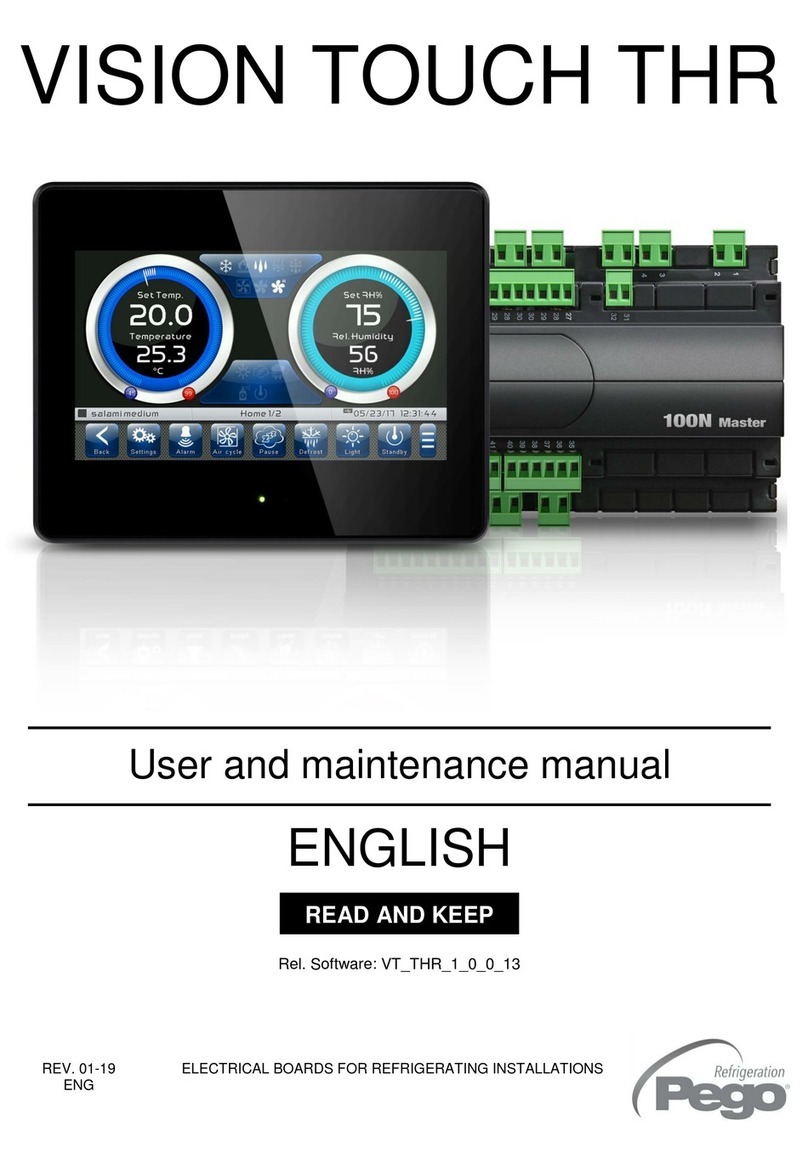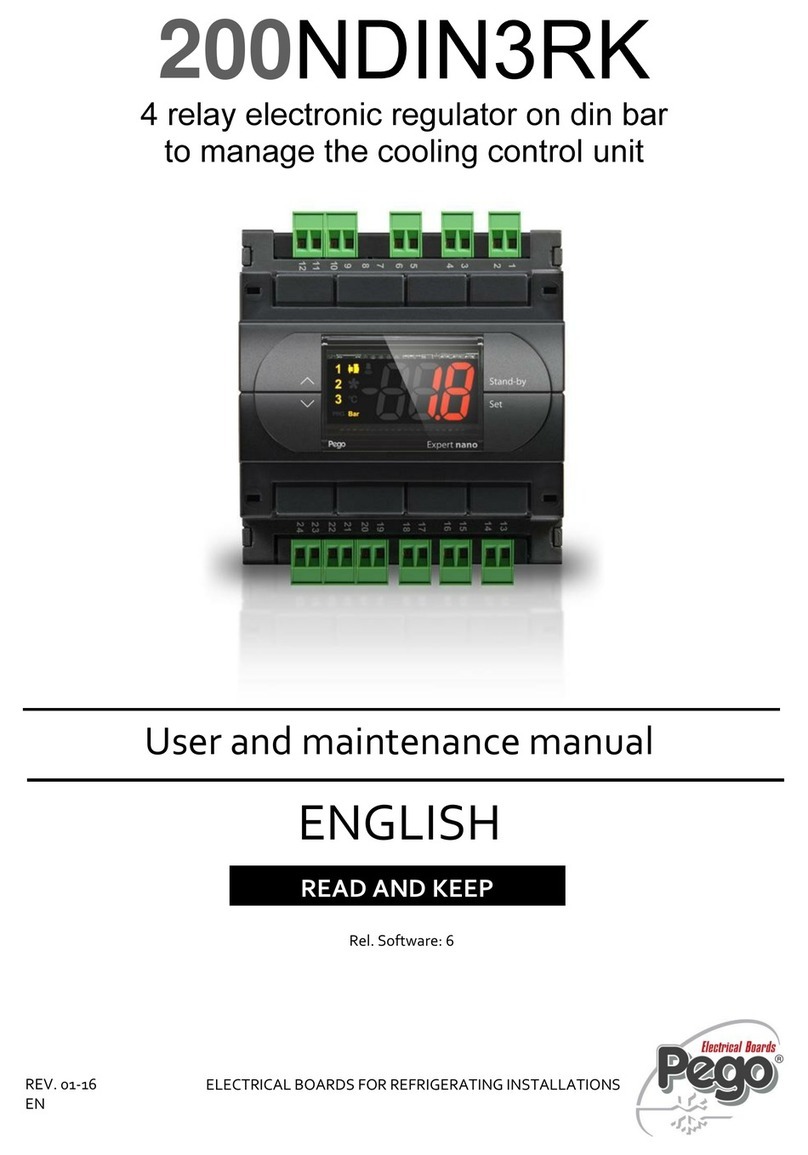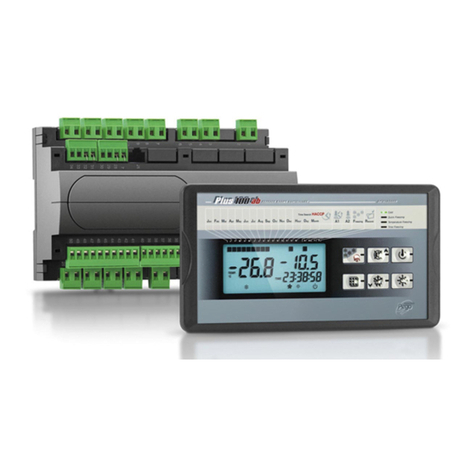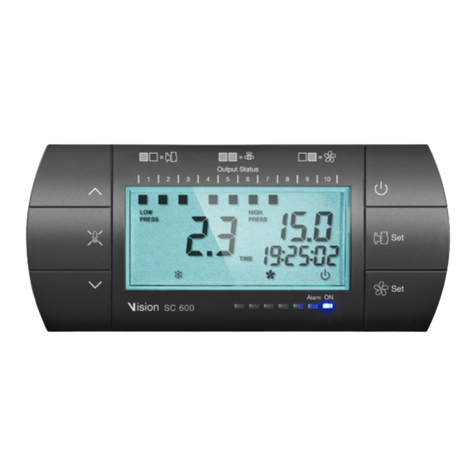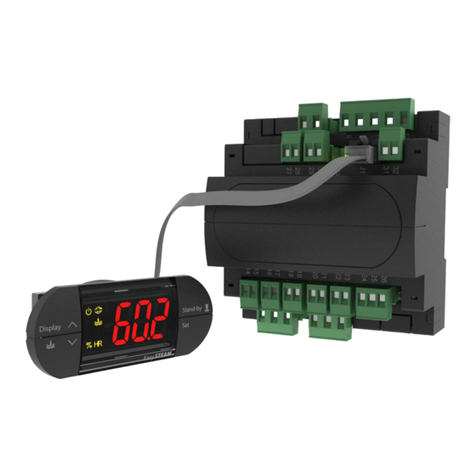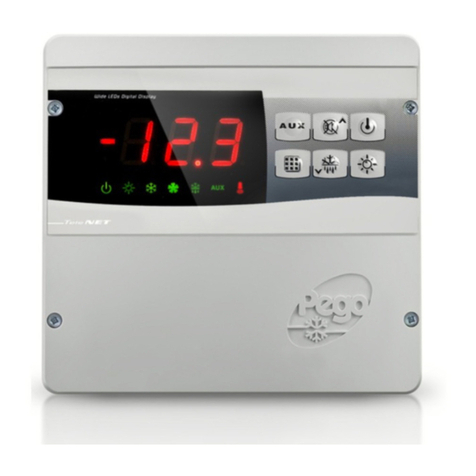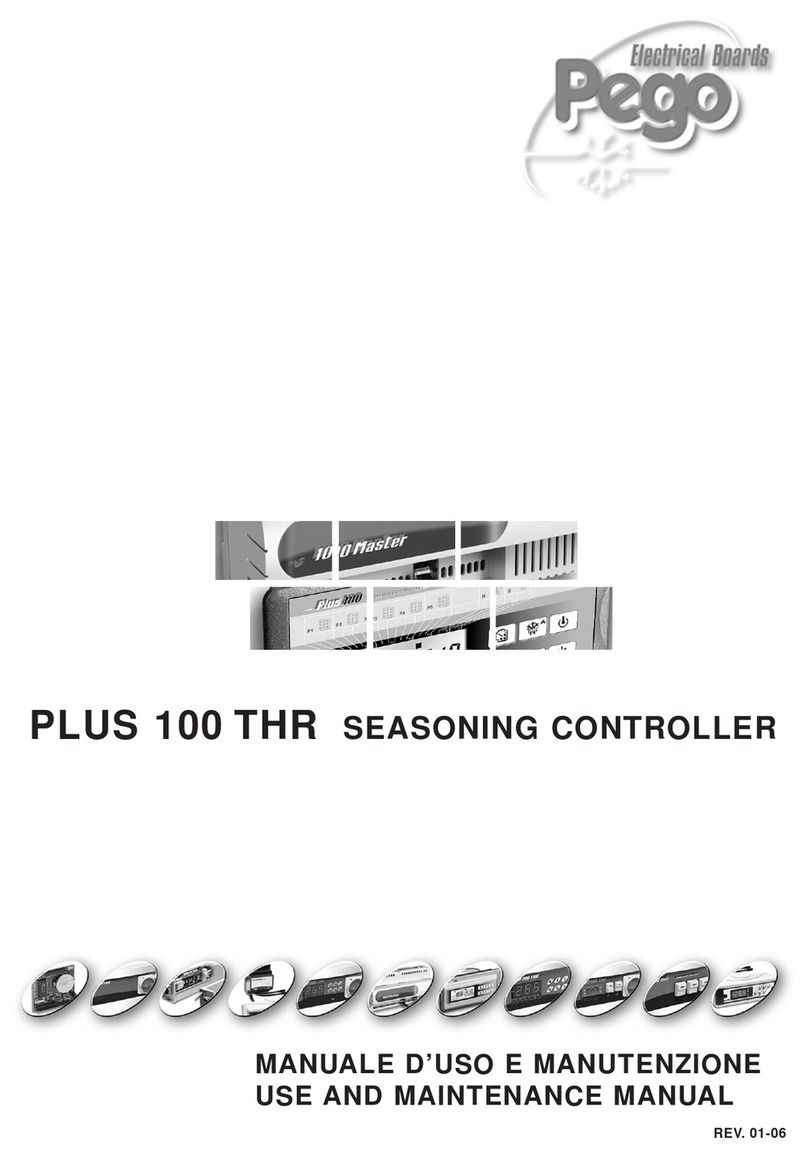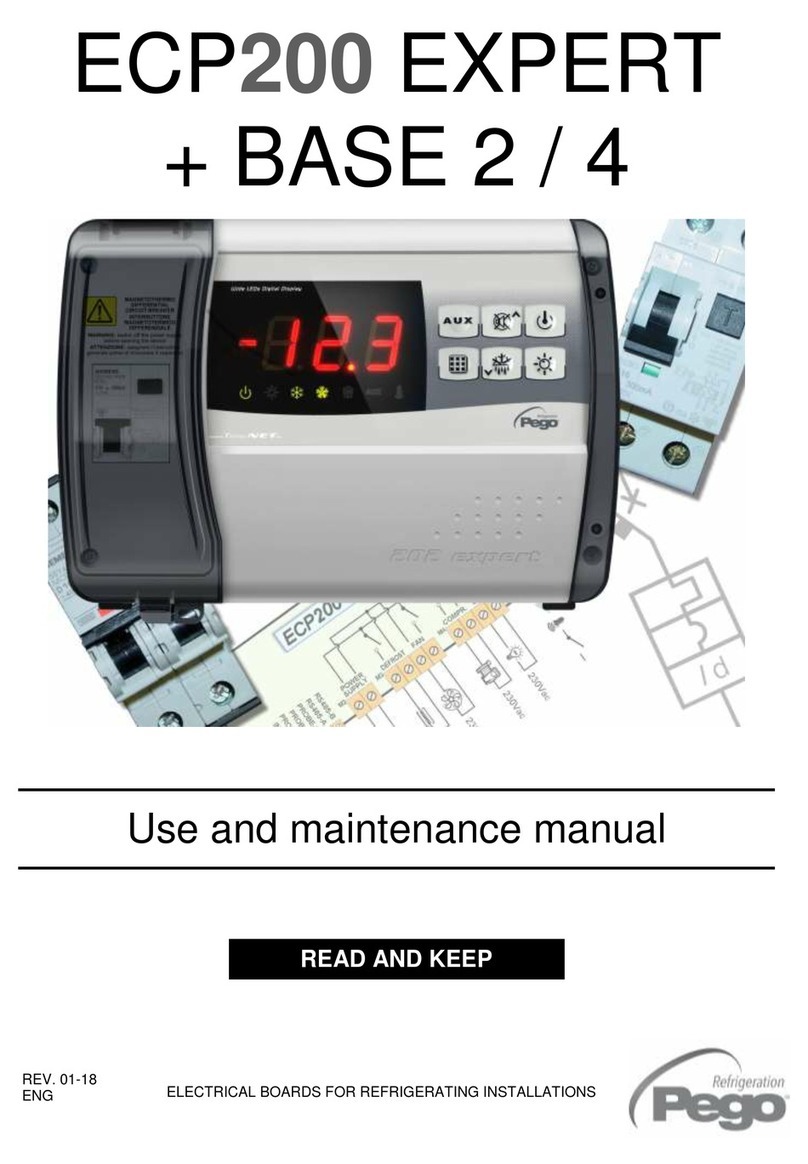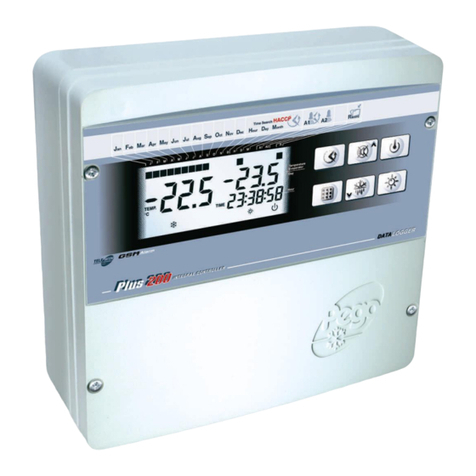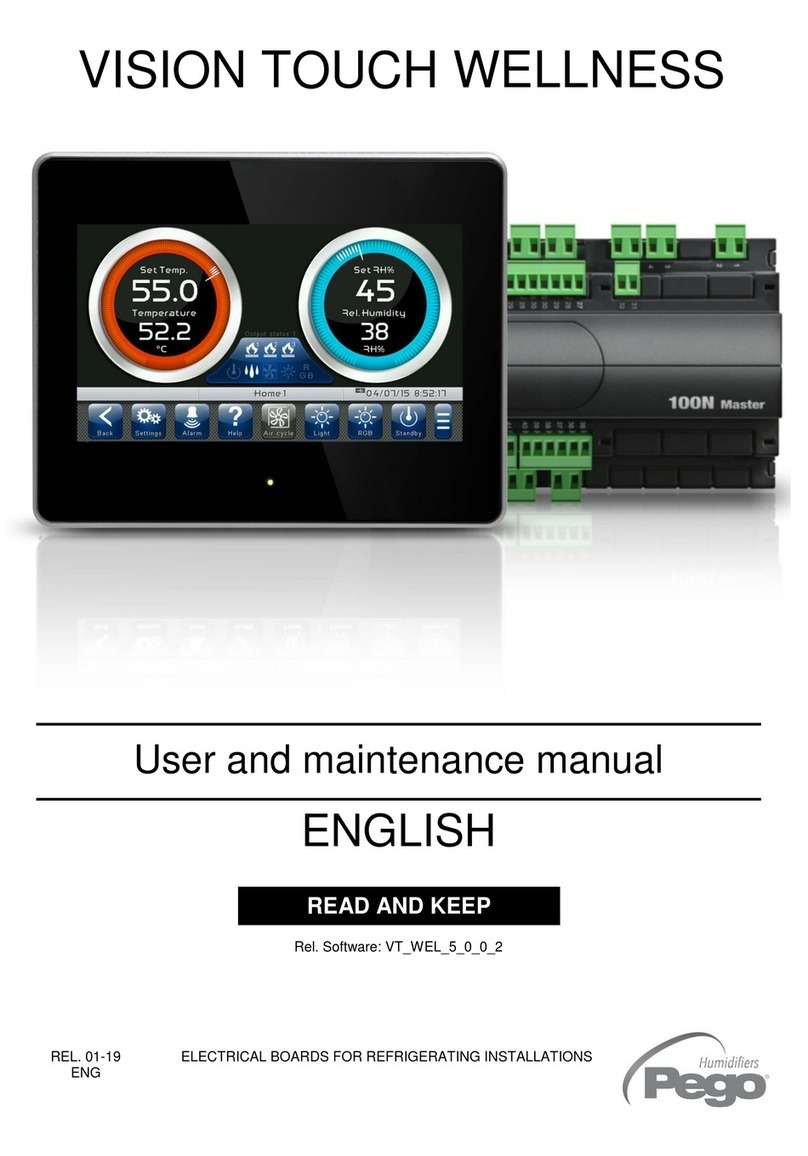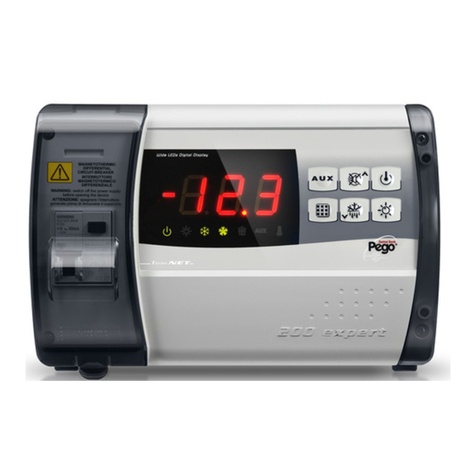GENERAL
DESCRIPTION:
The ECP200 EXPERT PULSE is a new control panel for cold rooms with magneto-thermal
cut-out switch for the management of the refrigeration system with integrated control of
electronic expansion valve ON / OFF with coil to 230VAC and single-phase compressor up
to 2 HP.
It allows the user to control all the components on a refrigerating system: compressor,
EEV pulse, evaporator fans, defrosting elements room light and thermostat-holder
demisting element.
APPLICATIONS:
-Complete management of single-phase static or ventilated refrigeration systems up to
2 HP, with off-cycle or electrical defrosting and with direct or pump-down compressor
stop.
-For plants with evaporator managed by the electronic expansion valve ON/OFF at
230Vac.
-Real time clock defrosting.
-Control of single-phase evaporator unit only with electronic expansion valve ON/OFF
230Vac or remote condensing unit enable signal.
MAIN CHARACTERISTICS:
-Compatible with 22 gases:
R404, R134, R22, R407A, R407F, R407H, R410A, R450A, R507, R513A, R744(CO2),
R449A, R290, R32, R448A, R452A, R600, R600A, R1270, R1234ze, R23, R717(NH3).
-Cold room temperature displaying and regulation with decimal point.
-Evaporator temperature displaying from parameter.
-Plant control activation/deactivation.
-Plant alarms signaling (probe error, minimum and maximum temperature alarm,
compressor protection).
-LED indicators and large display illustrate system status.
-User-friendly keypad.
-Evaporator fans management.
-Manual and automatic defrost (static, through heaters, through cycle reversal).
-Direct or pump-down management and control of condensing unit up to 2HP.
-Cold room light activation through key on the panel or through door-switch.
-Direct control of compressor, defrosting elements, evaporator fans, room light with
outputs directly connectable to the various units.
-Magneto-thermal cut-out switch for isolation and protection of the refrigeration unit.
-Innovative, smartly designed ABS cover with transparent cover for access to the
magneto-thermal cut-out switch, all with an IP65 protection rating so that panel can be
used outside the room.
-Auxiliary relay with parameter-configured.
-Possibility, as an alternative to an auxiliary relay, of a RS485 port for connection to the
TeleNET supervision net or to a net with MODBUS-RTU protocol.


